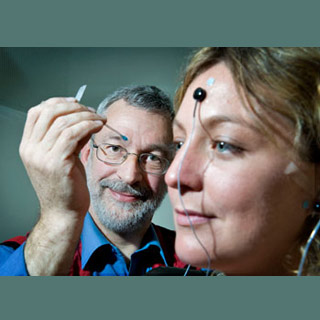
Brian Lithgow is believed to have developed electrovestibulography which is something similar to an ‘ECG for the mind’. Patterns of electrical activity inside the brain’s vestibular (balance) system appear to have been evaluated against distinct response patterns found in depression, schizophrenia and other Central Nervous System (CNS) disorders.
The vestibular system is known to be directly connected to the primitive regions of the brain which relate to emotions and behaviour. Hence, Lithgow may perhaps have distinguished the diagnostic possibility of measuring and comparing different patterns of electrovestibular activity.
Monash biomedical engineer Brian Lithgow was noted to have worked with psychiatry researchers at Monash University’s Alfred Psychiatry Research Centre (MAPrc). He was believed to have tested volunteers and found discrete response patterns, or ‘biomarkers’. Apparently, these biomarkers distinguished different CNS diseases from each other and from normal electrovestibular activity.
During the treatment, the patient is made to sit on a specially designed tilt chair which triggers electrical responses in their balance system. Subsequently, a gel-tipped electrode appears to be placed in the individual’s ear canal silences. Moreover, these electrodes seem to interfere with the noise so that the meaningful electrical responses are captured and recorded.
Lithgow further said that, “The responses are then compared to the distinct biomarkers indicative of particular CNS disorders, allowing diagnosis to be made in under an hour.â€
Neural Diagnostics CEO Dr Roger Edwards claimed that the repercussions of the latest technique appear to be huge.
“This could be one of the most significant inventions ever to come out of Monash. CNS disorders cost upwards of $US2 trillion globally and affect one in four people sometime in their lifetime. At present, diagnosing these conditions is done almost exclusively by qualitative measures, through questions and interviews, and it can take many years for sufferers to be correctly diagnosed,†adds Dr Edwards.
The technique seems to be already attracting international interest and, if further testing goes to plan, it could be accepted in Australian and overseas hospitals within a few years.
Dr Edwards further said that, “We are doing the necessary research and development and getting independent expert reports done, but results so far are cause for great optimism.â€
MAPrc Director Professor Jayashri Kulkarni said that, “Engineering and psychiatry are two disciplines that do not usually work together, but here at MAPrc, through our collaboration, we are at the forefront of translating biotechnology into clinical tools for psychiatric practice. While there is more work to be done, electrovestibulography could provide a major breakthrough in the diagnosis of serious mental illnesses,â€
Monash researchers seem to have collaborated with corporate partner Neural Diagnostics in order to develop a patent electrovestibulography, or EVestG. They anticipate that the simple, quick and inexpensive screening process for CNS diseases could ultimately become normal practice in hospitals around the world.
